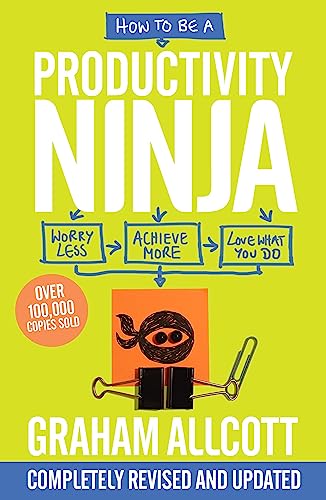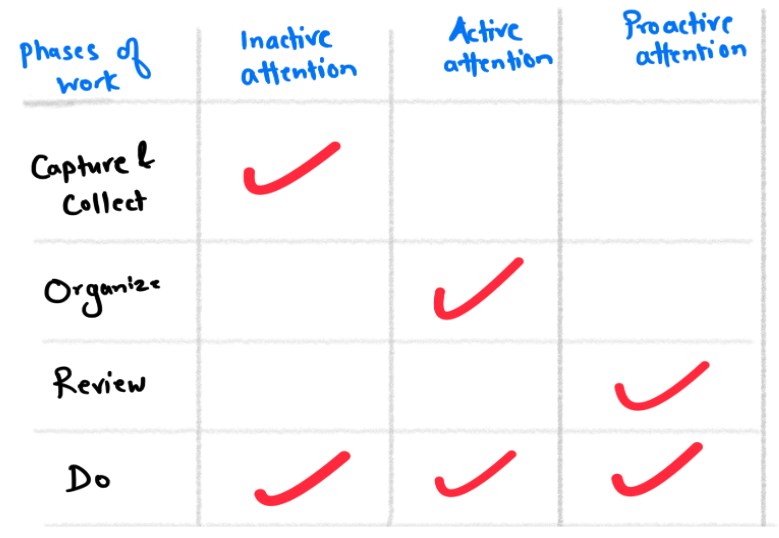Productivity Ninja | Graham Allcott
Published by getfundedeasily on
Productivity Ninja by Graham Allcott

Managing time vs Managing attention
We are living in a world where information sources have increased, and we’re expected to handle more complex jobs especially when our jobs are less defined. It is more important to manage our attention during such times than to manage our time. Since our attention span is much shorter than the amount of time we have in a day, we need to focus only on the things that matter to us.
Pushing boundaries is easier when we are not them pushing enough.
The productivity Ninjas: who are they?
The Ninja is just like any other person
- Who possess a very special mindset along with tools and skills.
- Who has earned a reputation for delivering, being reliable, making good decisions, and following through on their commitments.
- Who is passionate, indispensable and calm under pressure.

Three Tips For Productivity
- Have faith in your systems- confidence in your systems will help you create more time in the future
- Be organized – will help you get in good frame of mind and in the flow.
- Manage your expectations- clearly state and then manage your expectations to reduce the stress.
What are the stress triggers?
- Control- not having complete control can cause stress. Brining more clarity will reduce the stress.
- Change– re-adjusting can cause stress. How we react to change defines us.
- Overload panic- volume of new inputs is a stress agent. Use good system in place.
- Conflict – confrontation with the right spirit can help reduce conflicts
Achieve more by focusing on your core
Our level of attention fluctuates throughout the day. Try to make sure schedule fits our attention level.
- Proactive Attention– Mostly in the early morning… focus on things with a high return such as key decisions, critical emails, etc.
- Active Attention- Mostly during the work time… make day-to-day decisions, attend meetings, etc.
- Inactive Attention– Mostly post lunch… do filing, printing, and online orders.
The type of work should fit our attention level

Industrial age vs current age
We are living in a world where information sources have increased, and we’re expected to handle more complex jobs while our jobs are less defined. Managing our attention is more critical than managing our time. Since our attention span is much shorter than the amount of time we have in a day, we need to focus only on the things that matter to us. Above will help expand our worldview and help us connect with others deeply.
Email Productivity
- Don’t just check your emails, process them
- Don’t mistake connectivity for productivity
- Perfect the art of subject line
- Keep your reference folder simple
- Use templates
The main thing is to keep the main thing the main thing.
– Stephen Covey
How strong is your CORD?
The CORD model will strengthen your decision making, increase your awareness and leave you feeling more in control.
- C – Capture and Collect
- O – Organise
- R – Review
- D – Do
Step1: C – Capture and Collect
- Capture outstanding tasks and collect them in one place.
- Don’t analyse them. Just capture it as the first step.
- Minimize the collection point.
Step 2: O – Organize
- Categorized the captured tasks by project
- Make a daily to-do list based on the priority of the projects.
Step 3: R – Review
- Review your Master list and To-Dos thoroughly.
- Having insufficient review leads to feeling uncertain, inability to put things in perspective, inefficiency, a sense of panic, and working reactively rather than proactive.
Step 4: D – Do
- Doing things is the best way to get them done.
- Align your to-dos with the attention level.
- Whenever you’re focused, do the deep work, and when you’re not, do data entry type work.
Boost your productivity with smart techniques
Two-minute rule: Actions that will take less than two minutes should be performed when they are defined. Tiny wins create momentum.
- Pomodoro technique: You spend 25-minute intervals of focused work followed by five-minute breaks. This technique helps you focus sharply and avoid procrastination.
- Power hour technique: you can use this technique to accomplish those tasks you’ve been putting off. Identify the most challenging task and block out an hour on your calendar to focus on it.
Productivity is never an accident. It is always the result of the commitment to excellence, intelligent planning, and focused effort.
— Paul J. Meyer
Trick to wake up early
The trick to wake up early is not to wake up early. But to sleep in time.
How to improve your momentum?
By reducing the resistance.
Some of the examples to that increases resistance
- Arranging the meeting about doing the work you could just do now
- Over-organizing
- Being afraid of change
- Delaying difficult conversation
- Playing with productivity apps rather than being productive
Talk is cheap. Action is what counts.

How to connect with the other person quickly?
Humour!
Life is short. Smile while you still have teeth.
Key takeaways from Productivity Ninja book
- Focus on Attention management instead of time management
- Trust your systems
- Set expectations clearly
- Reduce resistance
- And keep the main thing main thing